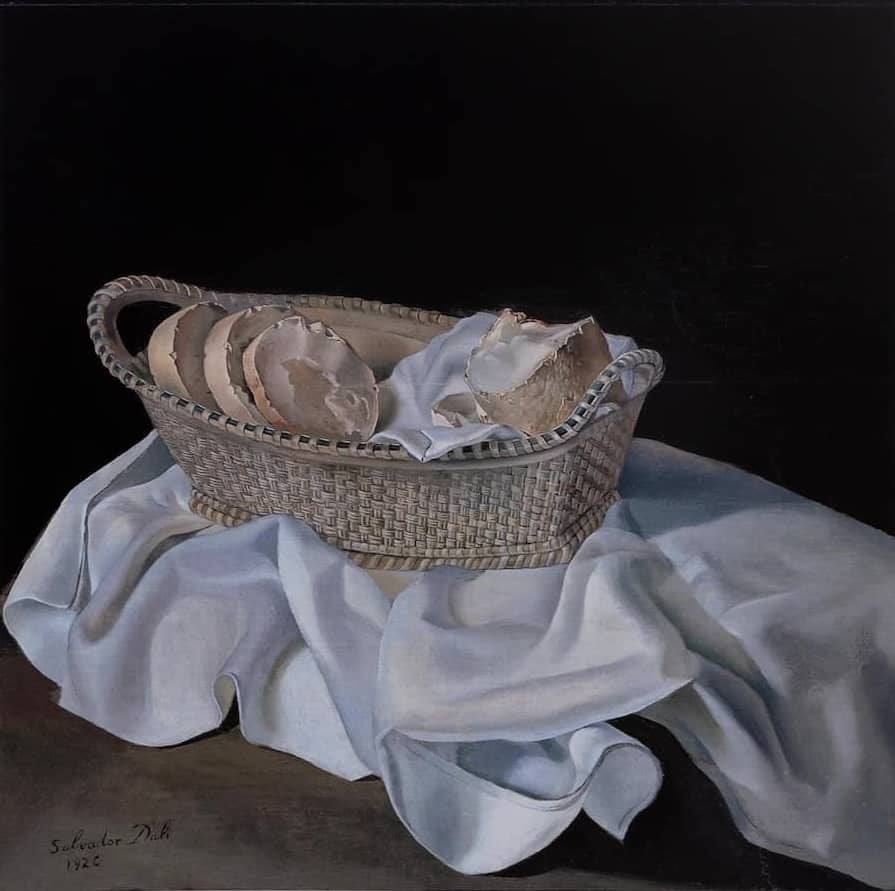Basket of Bread, 1926 by Salvador Dali

The Basket of Bread was created when Dali was 22, during his last months at art school in Madrid. He created this work as a test for himself - to prove his technical skill as a painter by demonstrating his ability to create the intense realism achieved by his artistic role models, particularly Johannes Vermeer.
The painstaking realism of The Basket of Bread was a major achievement and marked a turning point in his career. It boosted Dali's ego and gave him a sense of mastery with traditional painting, freeing him to explore more difficult subject matter and imagery. This simple composition of bread in a straw basket on cloth is set dramatically against a dark background. Dali followed in the Spanish still-life tradition, where a domestic scene represents spiritual reflection. By saturating the objects in such a mysterious light, he transforms the composition into an object of deep contemplation.
At this early stage in his career, the artist associated bread with traditional Spanish culture; it was a staple in every kitchen. Bread would remain an important and often-repeated image in his work, evolving as a symbol over time as Dali's interests changed.























